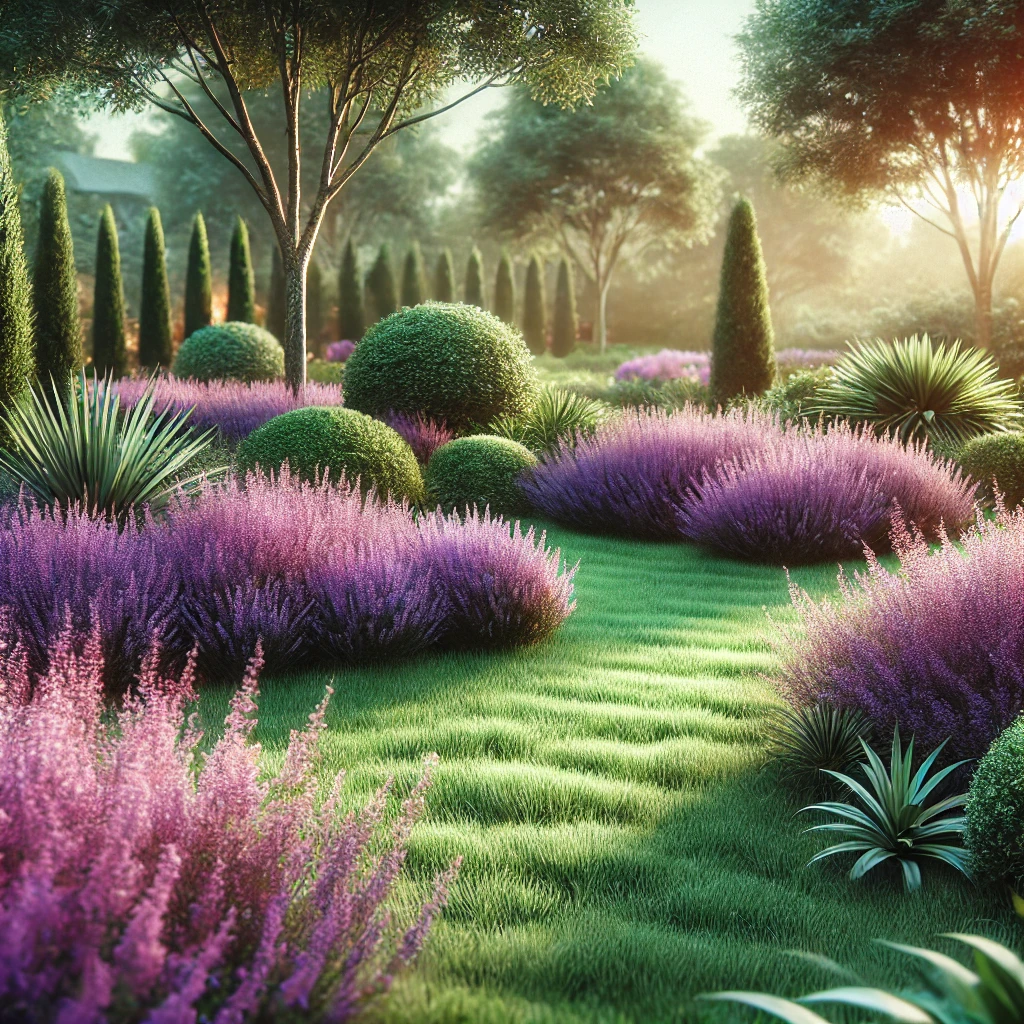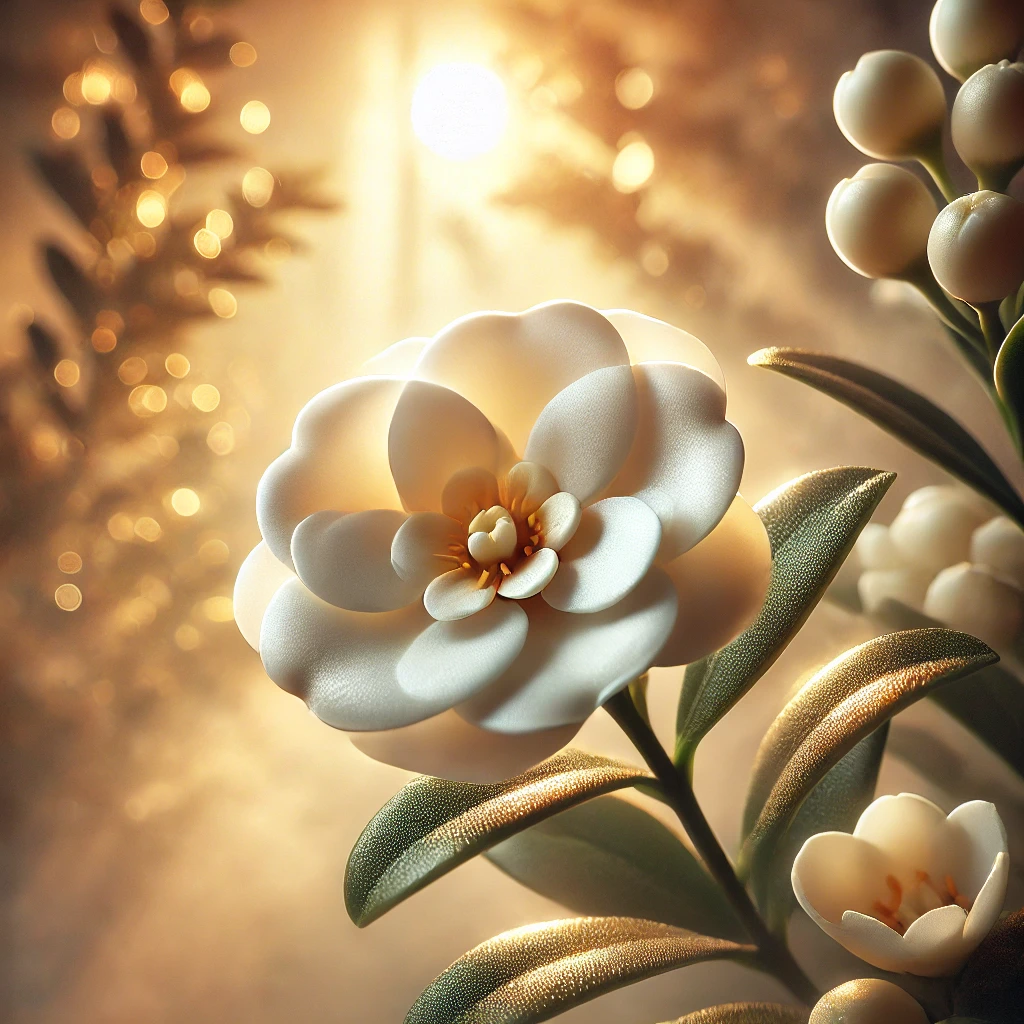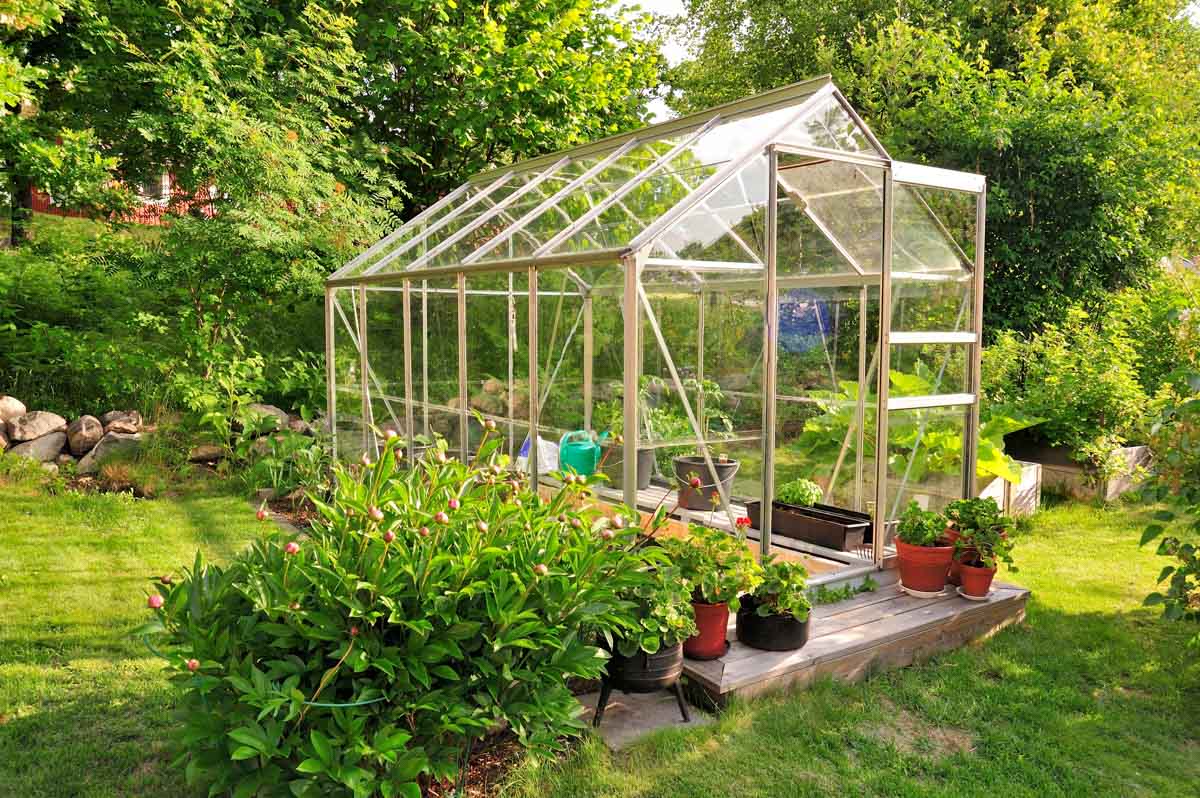Gardening is not just about plants—it’s about creating an environment that sparks joy, fosters biodiversity, and provides a continually evolving source of inspiration. One of the most visually striking additions you can make to your garden is a shrub with purple flowers. The deep hues of purple blossoms lend an air of mystery and elegance, while the structural framework of shrubs helps define garden spaces, create visual anchors, and provide year-round interest.
In this comprehensive article, we’re exploring secret tactics for growth that will help you cultivate these radiant shrubs to their fullest potential. We’ll go beyond standard planting instructions, delving into specialized tips on soil preparation, watering schedules, pruning strategies, pest control, and design ideas. We’ll also take a look at a specific variation—a shrub with purple flowers and yellow berries—to illustrate how particular cultivars can add both color and texture to your outdoor space.
Whether you’re a long-time green thumb or a curious beginner, these tactics will help ensure that your purple-blooming shrubs thrive. We will walk through best practices, from the moment you first introduce your shrub to your garden all the way through its annual cycle of maintenance. And if you’re looking for further resources, remember that GardenLoom.com features a wide range of guides, tools, and articles to support every facet of your gardening journey.
By the end, you’ll be equipped with practical knowledge and expert tips to confidently cultivate a shrub with purple flowers that not only survives but truly flourishes in your garden.
Understanding Shrubs with Purple Flowers

Table of Contents
Common Characteristics
A shrub with purple flowers often exudes an air of regality and sophistication, thanks to the universally admired purple hue that symbolizes creativity, royalty, and tranquility. Many purple-flowering shrubs boast:
- Vibrant Petals: The intensity of purple can range from a pastel lavender to a bold, dark royal purple.
- Long Bloom Times: Many species of purple-blooming shrubs can flower prolifically for extended periods, offering visual excitement throughout spring, summer, and sometimes into early fall.
- Diverse Forms and Sizes: From compact varieties that fit snugly in small gardens to taller shrubs providing privacy or acting as a focal point, there’s a purple-flowering shrub suited to every landscape design.
The Appeal of Yellow Berries
While the purple flowers often steal the spotlight, some shrubs also produce yellow berries after their blooming cycle, creating a delightful contrast. A shrub with purple flowers and yellow berries brings multi-season interest to the garden. In late summer or fall, when the flowers fade, these yellow berries take center stage, offering visual appeal that brightens up the landscape and sometimes even attracts local wildlife.
Environmental Preferences
Most purple-flowering shrubs perform best in:
- Moderate to Full Sunlight
- While some varieties can handle partial shade, most thrive in several hours of direct sunlight each day to support healthy bloom production.
- Well-Draining Soil
- If the soil is consistently moist or soggy, root rot can become a serious problem. Purple-blooming shrubs often prefer slightly acidic to neutral soil (pH around 6.0–7.0), although this can vary by species.
- Stable Moisture Levels
- These shrubs typically appreciate consistent watering, particularly during their establishment phase. Once matured, they may exhibit better drought tolerance, but consistent moisture still benefits bloom production.
- Mild to Warm Temperatures
- Many of these shrubs can handle cool winters, but extreme cold may cause dieback in less hardy varieties. Always check the hardiness zones for the specific species you intend to plant.
Ornamental and Landscaping Value
In addition to their aesthetic appeal, purple-blooming shrubs are often used for:
- Creating a Focal Point: The striking coloration naturally draws the eye.
- Defining Borders: Smaller shrubs can delineate a pathway or planting bed with a pop of color.
- Layering in Larger Gardens: Taller shrubs are great for the background in layered planting designs, creating depth and visual interest.
Understanding these basic preferences and benefits lays the foundation for successfully growing and maintaining a shrub with purple flowers or the captivating shrub with purple flowers and yellow berries.
Secret Tactics for Growth
While many gardening resources offer general tips, sometimes you need specific, detailed guidance to get the most out of your shrubs. These secret tactics are gleaned from experienced gardeners and horticultural experts who’ve honed techniques for optimizing growth and bloom production.
Soil Preparation and Fertilization
Soil Testing
Before planting, conduct a simple soil test. Basic test kits can be purchased at most garden centers or online. Analyzing pH and nutrient levels will help you tailor your soil amendments. Look specifically for:
- pH Range: Aim for slightly acidic to neutral.
- Nutrient Levels: Nitrogen, phosphorus, potassium, and micronutrients like iron and magnesium.
Organic Matter and Amendments
If your soil test indicates deficiencies, mix in:
- Compost: Adds essential organic matter and improves soil structure.
- Well-Rotted Manure: Offers a nutrient boost, but be careful not to overapply.
- Leaf Mold or Peat Moss: Increases acidity if needed and enhances moisture retention.
Loosen the soil to a depth of about 12–18 inches to encourage deep root growth. A well-aerated soil structure allows roots to expand more efficiently, providing a solid foundation for the plant.
Slow-Release Fertilizers
A balanced, slow-release fertilizer applied in early spring supports sustained growth. Opt for formulations that break down gradually. This prevents the “feast or famine” scenario where plants receive too many nutrients all at once, then too few. Reapply mid-season, if needed, but always adhere to recommended dosages.
Planting and Propagation
Selection and Timing
Choosing the right shrub with purple flowers depends on your climate, garden size, and design objectives. Generally, spring and fall are the best seasons for planting shrubs, allowing them to establish root systems in mild temperatures. If you’re aiming to grow a shrub with purple flowers and yellow berries, ensure you select a variety known for berry production and cross-check its USDA hardiness zone.
Planting Steps
- Dig the Hole: It should be roughly twice as wide but no deeper than the root ball.
- Assess the Root Ball: Gently loosen any roots that appear root-bound.
- Position the Shrub: Place it at the same depth it was in its nursery container. Planting too deep can cause the base of the stem to remain overly moist.
- Backfill with Amended Soil: Mix some of the loosened native soil with organic matter to give the shrub an optimal start.
- Water Thoroughly: This helps settle the soil around the roots, eliminating air pockets.
Propagation Techniques
- Cuttings: Many shrubs with purple flowers can be propagated via semi-hardwood or hardwood cuttings. Use a rooting hormone for better success rates.
- Layering: Some species respond well to ground layering—bending a low branch to the ground and covering it with soil, leaving the tip exposed. Once roots develop, the new plant can be severed from the parent.
Watering and Maintenance
Watering Schedule
- Establishment Phase (First Year): Keep the soil evenly moist, especially during hot or dry spells. An inch of water per week is often recommended, but always adjust to local conditions.
- Mature Shrubs: Once established, many purple-flowering shrubs can tolerate short periods of drought. However, inconsistent watering can lead to stress and reduced bloom output.
Mulching and Weed Control
Applying a 2–3 inch layer of mulch around the base:
- Retains Moisture: Reduces the frequency of watering.
- Regulates Soil Temperature: Keeps roots cooler in summer and warmer in winter.
- Suppresses Weeds: Diminishes competition for nutrients and water.
Common mulch materials include shredded bark, wood chips, straw, or pine needles. However, keep mulch a few inches away from the shrub’s trunk to prevent rot and discourage pests.
Pruning Techniques
- Timing: Prune immediately after flowering if the shrub blooms on old wood. If it blooms on new wood, late winter or early spring pruning is best.
- Method: Use clean, sharp pruning shears. Remove any dead, diseased, or crossing branches first. Aim to open the shrub’s center for better air circulation and sunlight penetration.
- Shaping: For a more formal look, light shaping can be done without removing too much healthy wood. Over-pruning can reduce blooms in the following season.
Pest and Disease Management
Common Threats
A shrub with purple flowers might be susceptible to:
- Aphids: These tiny insects cluster on new growth, sucking out sap.
- Spider Mites: Cause stippling on leaves and can defoliate the shrub if left unchecked.
- Fungal Diseases: Powdery mildew and leaf spot are common in damp, humid climates.
Safe and Eco-Friendly Control Methods
- Encourage Beneficial Insects: Ladybugs and lacewings prey on aphids. Planting companion species that attract beneficial insects can help keep pests in check naturally.
- Neem Oil or Horticultural Soap: These can be applied to manage infestations without resorting to harsher chemicals.
- Proper Sanitation: Remove fallen leaves and debris that can harbor fungal spores or pest eggs.
- Optimized Air Circulation: Prune overgrown branches and avoid overcrowding to reduce the humidity around foliage.
If severe issues arise, consult with local horticultural experts or your county extension office, but avoid purchasing treatments from unknown or unverified sources.
Landscaping Ideas and Aesthetics

A flourishing shrub with purple flowers can act as a stand-alone focal point, but it also pairs beautifully with a variety of other garden elements to create layered, dynamic landscapes. The interplay of purple blooms with various textures, colors, and heights can transform a garden into a living tapestry.
Color Combinations
- Contrasting Colors: Pair purple with bright yellows, oranges, or even chartreuse foliage. This contrast draws the eye and makes each color more vibrant.
- Monochromatic Schemes: Create a soothing atmosphere by pairing purple-flowering shrubs with lavender, purple salvia, or blue-purple perennials.
- Neutral Anchors: White or silver-foliage plants can serve as a calm backdrop, allowing the purple flowers to stand out more dramatically.
Texture and Form
When you have a shrub with purple flowers and yellow berries, you introduce multiple layers of texture—soft petals, glossy berries, and structured branches. Incorporate complementary textures like ornamental grasses, spiky accent plants, and lush groundcovers to create visual depth.
Focal Points and Groupings
- Specimen Planting: Place a single shrub with dramatic blooms in a prominent location.
- Mass Planting: For a strong visual impact, plant several shrubs in a cluster. This works especially well in larger gardens or along a property boundary.
- Mixed Borders: Combine your purple-flowering shrubs with evergreens, deciduous trees, and seasonal annuals to maintain interest year-round.
Plan for Wildlife
Purple flowers often attract pollinators like bees, butterflies, and hummingbirds, while the yellow berries can feed birds during cooler months. If attracting wildlife is part of your garden plan, include nectar-rich flowers and additional berry-bearing shrubs or trees to create a thriving habitat.
Seasonal Care Calendar
Maintaining a shrub with purple flowers in peak condition involves adjustments in your care routine as the seasons change. A seasonal or monthly calendar helps you stay on top of tasks and ensure the shrub’s long-term health.
Spring
- Early Spring: Prune if it’s a new-wood blooming variety. Apply a slow-release fertilizer at the base of the plant.
- Mid to Late Spring: Monitor for early signs of pests like aphids on fresh, tender growth. Start a regular watering schedule as the soil warms.
Summer
- Regular Watering: Keep the soil evenly moist but not waterlogged. Mulch helps reduce evaporation.
- Pest Control: Check for spider mites, caterpillars, and leaf spot. Treat infestations promptly with safe methods.
- Deadheading: Some varieties appreciate removing spent blooms to encourage fresh flowering.
Fall
- Planting and Transplanting: This is an ideal season for new shrub planting because temperatures are cooler, and the soil remains warm.
- Fertilizer Application: Use a low-nitrogen fertilizer if your shrub needs an extra boost. Avoid high-nitrogen formulas that could stimulate late-season growth vulnerable to frost.
- Leaf Cleanup: Rake and dispose of fallen leaves to minimize fungal disease risks.
Winter
- Protection: If you’re in a colder climate, apply a thicker layer of mulch around the root zone.
- Pruning (Some Varieties): Shrubs that bloom on old wood shouldn’t be pruned in winter; those that bloom on new wood can be pruned when fully dormant.
- Monitoring: Check for signs of winter desiccation or rodent damage at the base of the plant.
This calendar ensures each season’s essential tasks are clearly laid out, making it easy to provide targeted, timely care.
Use Cases for Purple-Flowering Shrubs
A shrub with purple flowers isn’t just a showpiece; it can serve multiple functional and aesthetic purposes in your outdoor living space.
Garden Display
Plant purple-flowering shrubs in areas where they’ll receive maximum visibility, such as the focal point near a patio or the entrance to your home. Their vivid blooms will capture the attention of guests and passersby.
Privacy Hedges
Many purple-flowering shrubs can be trained or selected for denser growth, making them suitable for hedging. A blooming hedge offers both privacy and visual appeal—a far cry from traditional green walls.
Pollinator-Friendly Areas
Because purple is especially visible to bees and other pollinators, these shrubs often become a hotspot for butterflies, bees, and hummingbirds. If you aim to promote biodiversity, planting a shrub with purple flowers will likely enhance the ecological value of your garden.
Seasonal Color Variation
If you opt for a shrub with purple flowers and yellow berries, you’ll enjoy a transition of colors as the seasons progress. The berries often form after the blooms fade, offering a second wave of ornamental interest through late summer and fall.
Incorporating GardenLoom Resources
When tending your purple-flowering shrubs, it’s always handy to have accessible, expert-backed resources. At GardenLoom.com, you’ll find:
- Guides and Tutorials: Step-by-step instructions for planting, feeding, pruning, and troubleshooting your shrubs.
- Product Recommendations: Check out soil amendments, garden tools, and fertilizers that align with horticultural best practices—without referencing competitor brands.
- Community Forum: Connect with fellow gardeners to share experiences, troubleshoot problems, and exchange success stories involving shrubs with purple flowers.
A well-informed gardener is more likely to achieve thriving results, and GardenLoom is here to support that goal every step of the way.
FAQs About Shrubs With Purple Flowers
1. What types of climates do shrubs with purple flowers thrive in?
Shrubs with purple flowers typically thrive in mild to warm climates and prefer growing in USDA hardiness zones that match their species. Most varieties need several hours of direct sunlight daily, though a few can tolerate partial shade. Always check the recommended hardiness range for the specific shrub you’re planting.
2. How do I encourage more blooms on my purple-flowering shrub?
Focus on these three essentials:
- Soil Health: Conduct a soil test to ensure the proper pH (generally slightly acidic to neutral).
- Fertilization: Use a balanced, slow-release fertilizer in early spring and possibly mid-season if needed.
- Pruning: Prune at the correct time for your shrub’s bloom cycle (new wood vs. old wood) to encourage vigorous new growth and more blossoms.
3. Can a shrub with purple flowers also produce berries?
Yes! Some species do produce ornamental berries after the blooming season—such as the shrub with purple flowers and yellow berries variety. These berries can add months of visual interest to your garden and often attract birds.
4. How often should I water my shrubs with purple flowers?
- During the First Year (Establishment Phase): Provide consistent moisture—about 1 inch of water per week, adjusting for rainfall.
- Mature Plants: Most purple-flowering shrubs develop moderate drought tolerance. However, extended dry spells may reduce bloom quantity and quality, so water as needed to keep the soil evenly moist.
5. When and how should I prune my purple-flowering shrubs?

- Timing: If the shrub blooms on old wood, prune right after the flowers fade. If it blooms on new wood, prune in late winter or very early spring before active growth starts.
- Method: Remove dead, diseased, or crossing branches to improve airflow and direct the plant’s energy into healthy stems. Be careful not to over-prune, as it can reduce the next season’s flowering potential.
6. Are purple-flowering shrubs prone to any particular pests or diseases?
Common issues include aphids, spider mites, and fungal diseases like powdery mildew. Promoting air circulation with proper spacing and pruning, removing debris, and applying eco-friendly solutions like neem oil or horticultural soap can help manage pests and prevent fungal outbreaks.
7. How do I incorporate purple-flowering shrubs into my garden design?
- Focal Points: Use them as specimen plants in areas that draw attention, like entryways or center beds.
- Mixed Borders: Combine them with perennials and evergreens for year-round interest.
- Color Coordination: Purple blends well with yellows, oranges, whites, and silvers, creating vibrant or soothing color schemes depending on your preference.
8. Can I grow shrubs with purple flowers in containers?
Yes. Many compact varieties adapt well to container gardening. Just ensure the container has good drainage, use high-quality potting mix, and keep up with regular watering and fertilization since container soil can dry out faster.
9. Where can I find more resources on growing shrubs with purple flowers?
For additional guides, tutorials, and garden inspiration, visit GardenLoom.com. You’ll find tips on soil preparation, seasonal care, and more to help your purple-blooming shrubs thrive.
Conclusion
A shrub with purple flowers can transform your garden into a vibrant, enchanting space. These shrubs not only provide a regal touch with their bold blooms but can also offer unexpected treats like yellow berries, captivating both humans and wildlife alike. By paying close attention to soil conditions, fertilization schedules, watering regimens, and meticulous pruning, you’ll set your shrub up for a successful growing season year after year.
Remember that gardening is as much about nurturing your own connection to nature as it is about growing plants. Take the time to observe, experiment, and adapt your tactics to your unique garden environment. Whether you’re a seasoned gardener or just starting out, these secret tactics will guide you toward healthy, robust purple-flowering shrubs that dazzle in any landscape.
And if you ever need more detailed guidance, visit GardenLoom.com for additional resources to help your garden thrive. With thoughtful planning and consistent care, your shrub with purple flowers will become a highlight of your outdoor space, delighting you for years to come.










